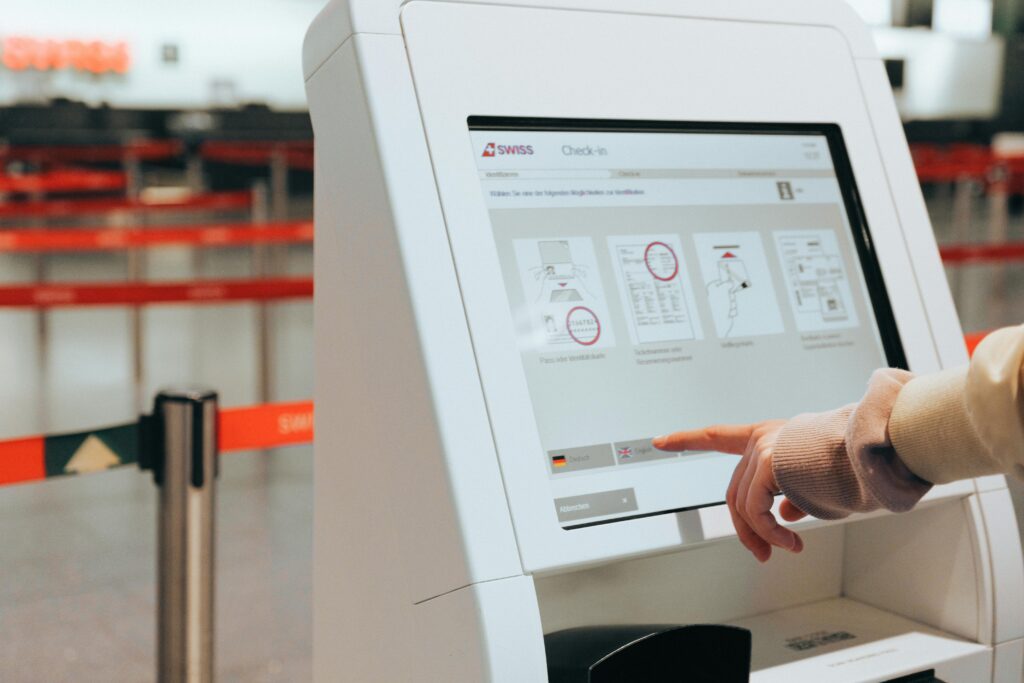Projected Capacitative (PCAP) controllers assist the process of setting up touchscreens and optimizing them for human digit inputs. However, tuning them adequately is challenging. Traditionally, engineers had to spend countless hours of trial and error creating the correct specifications for various screens on handheld devices.
This approach to PCAP sensor technology is now old news. A D Metro’s ARGON Adaptive PCAP controller simplifies PCAP sensor tuning, saving manufacturers time and money. Often, our system can achieve reliable tuning in seconds or minutes, not hours or days, which is commonplace using the old approach.
Why PCAP Tuning Is Necessary
Display integrators and machine builders spend countless hours annually tuning PCAP controllers to ensure sensors produce the desired touch screen performance, often involving hundreds of iterations of multiple parameters to get it right. Skilled technicians carry out this work, pushing up costs and tying up resources.
Unfortunately, PCAP touchscreens require controllers to interpret human finger and thumb inputs. Without these adjusted properly to all the display’s settings, screens won’t work.
Conventional configuration parameters include
- Display size
- Display orientation
- Touch sensitivity, (activation force)
- Drive voltage
Businesses often have to manage multiple device display sizes, which makes the process even more unmanageable. Many operate 7”, 15” and 24” devices, which each require specific firmware to get touchscreen interactions right.
Fortunately, ARGON PCAP has an adaptive controller that automatically adjusts connected PCAP sensors to the parameters listed above. These include things like the format, cover glass, and various environmental functions.
Manual input using this method is minimal, and engineers don’t need to spend hours on configuration. By and large, the system works by itself.
Automating this process is helpful because it eliminates the requirement for manual adjustments, which is something that dogs the industry. Associated labor costs fall considerably using this method, even if some human input remains necessary.
At A D Metro, we believe this approach simplifies inventory management significantly. ARGON controllers can bypass the requirement to use different firmware for each sensor size, reducing costs substantially, and cutting down on the need to stock so many different controller types.
Ultimately, this approach eliminates the hours of manual tuning required. Companies using our system can benefit from faster time-to-market, and substantially lower setup costs.
Factors That May Impact PCAP Controller
Various factors can influence PCAP controller configurations, so it is worth understanding these in advance of any work. These need adjustment for reliable performance over time.
Glove Operation
Glove operation is one challenge that may impact PCAP controller configuration settings. If the glove is too thick, it can impact touch detection, reducing sensitivity and, therefore, accuracy.
The way around this is to adjust the calibration to the glove operation. For example, engineers will often change the signal threshold or gain to mimic the touch sensitivity of regular skin. They will also tune devices so they can be operated with gloves that are compatible with them. (Some conductive gloves can be worn to operate touchscreens).
Water
Getting water on the screen can also introduce issues. Because water is conductive, it can mimic human fingers, leading to incorrect calibration of the sensors during parameterization.
The solution is to reduce water when training for regular touchscreen interactions and also help the system differentiate between water droplets and fingers. The latter is extremely important because it allows sensors to tell the difference between noise (if the screen gets wet) and intentional inputs provided by the user. It is possible for integrators to manually deal with water, but it takes time.
Close proximity to electronic/electrical equipment
Finally, some electrical equipment, like AC moors, can introduce electromagnetic interference (EMI) that makes it harder for sensors to detect real touches. These extraneous factors can yield false positives.
Solving this issue requires isolating the touchscreen from sources of EMI during some training phases, and making it robust against it in others. The goal of many engineers is to use additional information from surrounding equipment to increase the signal-to-noise ratio, so touchscreens react as expected by users in harsh environments.
Again, going down the manual route is time-consuming and challenging. It can take days to simulate all the situations a touchscreen might encounter to achieve suitably reliable performance.
How ARGON works
A D Metro’s patented intelligent ARGON controller automatically adapts to different sensor sizes without requiring tuning software for setup. This makes PCAP touch sensor configuration easier, without needing special tools or training, all while offering high performance.
Here’s a simple rundown of how ARGON adapts to the attached PCAP sensor:
- Click the ARGON’s ‘learn” button to trigger the adaptation process. Release the button promptly and wait a few seconds for the blue light to stop flashing
- When ARGON’s light turns green (indicated by a single blip), touch and hold the top-left sensor quadrant for a few seconds until the green light switches off
- When the green light turns on again (with a double blip), touch and hold the top right quadrant as before, until the green sensor light turns off again
- WHen the green light turns on again, touch and hold either of the lower quadrants of the sensor until the green light turns off again.
- When the green light switches back on (sometimes with a quadruple blip) touch and hold the remaining lower sensor quadrant for a few seconds until it turns off.
Once you’ve been through this process, you’ve adapted the ARGON to the attached PCAP>
Easy Setup With Intelligent Adaptation
The ARGON controller’s standout feature is how it eliminates the complexity associated with configuring most PCAP touch sensors. Traditional controllers need tuning software and technical expertise, but ARGON eliminates most of that overhead, cutting down on the overall resources required.
For example, ARGON controllers don’t require apps to work. Instead, the system conforms automatically to screen parameters (like size), and thereby eliminates the need for external manual tuning. Users only need to press a single button and the controller tool will do everything for them, adjusting parameterization to the screen’s aspect ratio, sensor size, orientation and more.
The smart features of the ARGON PCAP controller help manufacturers simplify their inventory required for the implementation of Projected Capacitive (PCAP) touch technology in their product offering.
Optimized Performance With Automatic Adjustments
Beyond these standard features, ARGON controllers have performance optimization features that make them better able to adjust to the surrounding environment. This holistic approach means that they can take their surroundings into consideration during the tuning phase.
For example, the ARGON system can measure user finger inputs, including sensitivity and response time, and then calibrate these against the broader environment. For example, it can detect whether there is electromagnetic interference or other forms of noise and use advanced procedures to prevent these inputs from harming the setup.
This feature means that the ARGON controller is useful in less-than-perfect settings. For example, it can offer reliable performance even at busy kiosks or in situations where EMI interference is high. End users get a superior experience than trying to struggle against these confounding factors manually.
Making Manufacturing And Inventory Management Easier
Another benefit of the ARGON system (mentioned briefly above) is how it makes manufacturing and inventory management easier. The cost-saving advantages can sometimes be substantial depending on the type of operation you run.
For example, ARGON controllers automatically detect the number of channels and the size of connected sensors. This setup means that a single controller is all you really need, cutting down on the mess that multiple controllers can cause. Reducing the amount of equipment you need can then reduce the complexity of your operation and keep things simple. You no longer need to rent warehouse space to manage inventory.
Superior Field Servicing
Finally, ARGON’s controller can enable superior field servicing. Controllers self-configure, so field staff don’t need to worry about matching specific controllers to firmware, or any of that complex process. A do-it-all process means it is possible to install replacement controllers with minimal effort.
For businesses and clients, this ability is a godsend. It means that companies can reduce their downtime and deal with touchscreen-related interruptions quickly. It also means that they can offer a more rapid service, beating out rivals with slower turnaround times.
Wrapping Up
A D Metro’s ARGON controller is a step up in the world of configuring PCAP touchscreens. The ability to deal with devices of multiple specifications and manage external environmental noise is game-changing, both for field engineers and integrators. This approach boosts productivity significantly and cuts down on engineer’s time.
Furthermore, the technology enables the streamlining of firmware specification and device manufacturing. Companies that can take advantage of these systems will benefit from reduced complexity and increased productivity, minus excessive manual labor costs.
Ultimately, these breakthroughs should mean that the next generation of interactive devices, like kiosks or medical equipment, will be more affordable. Reducing development costs is critical to that effort.



